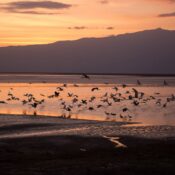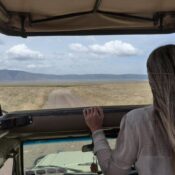Explore Lake Manyara: Tanzania’s Safari Paradise
Explore Lake Manyara: Tanzania’s Safari Paradise
Beneath the towering russet cliffs of the Great Rift Valley, Lake Manyara National Park unfolds as Tanzania’s most captivating ecological mosaic. This 330-square-kilometer sanctuary – often overshadowed by its famous neighbors Ngorongoro and Serengeti – conceals more natural wonders per acre than any other East African reserve. From its legendary tree-climbing lions lounging in acacia branches to the seasonal pink tides of flamingos that transform its alkaline lake into a living watercolor, Manyara delivers Africa’s most concentrated safari experience.
Table of Contents
The park’s genius lies in its geographic compression. Within an area smaller than New York City, visitors traverse seven distinct ecosystems – from groundwater forests dripping with orchids to open savannas where elephant herds cast long shadows at dusk. This density creates unparalleled wildlife encounters: it’s possible to spot lions, elephants, hippos, and 50+ bird species before lunch.
For discerning travelers seeking authentic wilderness without crowds, Manyara offers Tanzania’s last true hidden gem. This 6,000-word guide unveils its secrets – from optimal wildlife viewing strategies to little-known walking trails where colobus monkeys leap through ancient mahogany canopies.
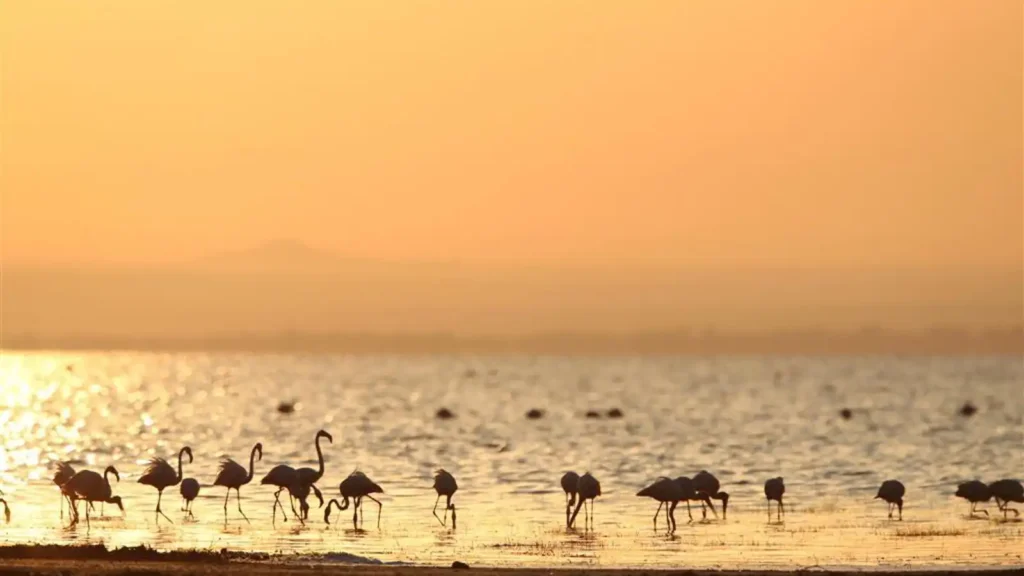
The Fascinating Origins of the Name “Lake Manyara National Park”
The name “Lake Manyara National Park” carries deep cultural and linguistic significance, rooted in the traditions of Tanzania’s indigenous communities. Unlike many African national parks named after colonial explorers or geographic features, “Manyara” derives from the Maasai language, reflecting the region’s heritage and the lake’s ecological importance to local pastoralists.
Maasai Etymology: “Manyara” as “Water Source”
The most widely accepted origin of the name “Manyara” comes from the Maasai word “emanyara,” which refers to the Euphorbia tirucalli plant, commonly known as the “rubber hedge euphorbia.” This spiny, cactus-like shrub thrives in the park’s alkaline soil and was historically used by the Maasai for:
- Constructing livestock enclosures (bomas) due to its dense, thorny branches
- Traditional medicine for treating ailments
- Water storage, as its succulent stems retain moisture
The Maasai, who have grazed their cattle in the region for centuries, named the lake “Manyara” because the Euphorbia plants grew abundantly along its shores, marking a reliable water source for both wildlife and livestock. Over time, European explorers and colonial administrators adopted the name, eventually formalizing it as “Lake Manyara” when the area was declared a game reserve in 1957 and later a national park in 1960.
Alternative Interpretations: “Manyara” as a Reflection of the Lake’s Nature
Some linguistic researchers suggest another possible meaning tied to the Maasai verb “kumanyara,” which describes the glimmering, shimmering effect of sunlight on water. Given the lake’s seasonal transformations—from a shallow, reflective sheet in the wet season to a cracked, salt-encrusted pan in the dry months—this interpretation poetically captures its ever-changing appearance.
Colonial Influence and Official Naming
While the Maasai had long referred to the area as “Manyara,” the formal establishment of the park under British colonial rule cemented the name. Early European explorers like Gustav Fischer (1883) and Otto Kersten (1886) recorded the lake as “Manyara” in their maps, though they misunderstood its Maasai origins. The park’s creation aimed to protect elephants from ivory hunting, but its name preserved the indigenous connection to the land.
Cultural Significance Today
The name “Lake Manyara National Park” remains a testament to Maasai heritage, even as the park has become a global safari destination. The Euphorbia tirucalli plants still grow along the lakeshore, and Maasai communities continue to live in the surrounding conservation area, maintaining their pastoral traditions.
The name “Lake Manyara” encapsulates ecology, culture, and history in a single word. From its Maasai roots to its modern-day status as a wildlife sanctuary, the park’s identity remains intertwined with the land’s original stewards. Whether derived from a plant, the play of light on water, or both, the name endures as a bridge between Tanzania’s past and present.
For visitors, understanding the name’s origin adds depth to the experience—knowing that “Manyara” isn’t just a label but a centuries-old reflection of the lake’s role as a lifeline for both wildlife and people.
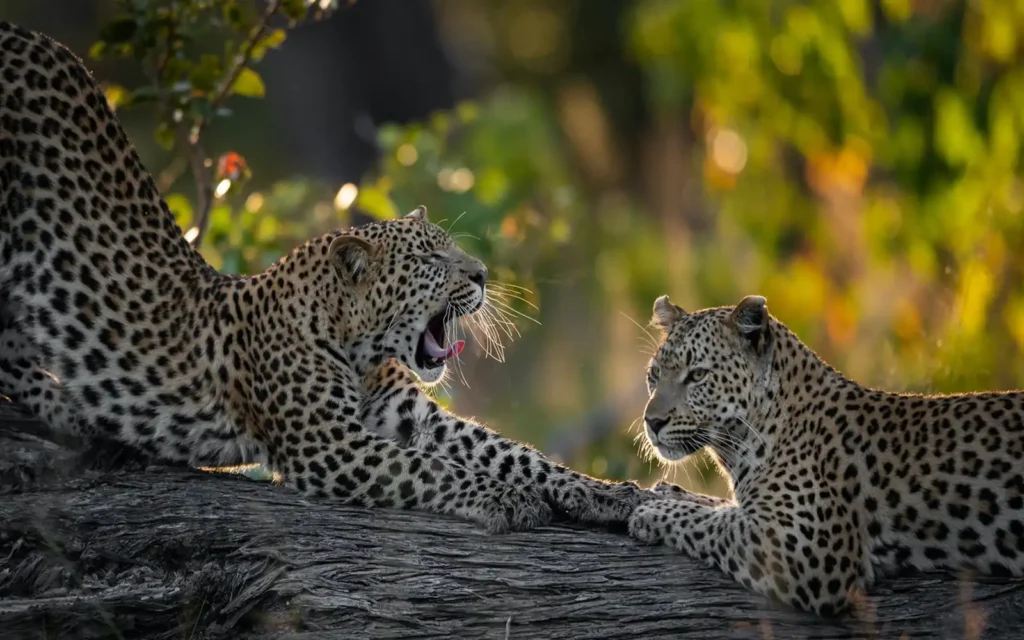
Geological Drama: The Rift Valley’s Living Laboratory
Lake Manyara owes its existence to the same tectonic forces that shaped Africa. Fifteen million years ago, the continent began splitting apart along the Great Rift Valley – a 6,000-kilometer scar stretching from Mozambique to the Red Sea. This cataclysm created Manyara’s defining features:
The 600-meter-high escarpment looming over the park’s western edge functions as a natural fortress. Its sheer walls trap moisture, creating a rainforest-like microclimate at the base where underground springs feed the only perennial streams in Tanzania’s northern safari circuit. These waters sustain the park’s famous groundwater forest – a Tolkienesque realm where strangler figs entwine 300-year-old mahogany trees and emerald sunbirds dart through shafts of golden light.
The alkaline lake itself behaves like a living organism. During the November-May rains, it expands to 230 square kilometers – three times its dry season size – attracting over 2 million flamingos that filter its mineral-rich waters for algae. By October, the lake contracts into a white-encrusted pan where elephants dig for salt crystals with their tusks. This dramatic transformation means visitors experience fundamentally different parks depending on season.
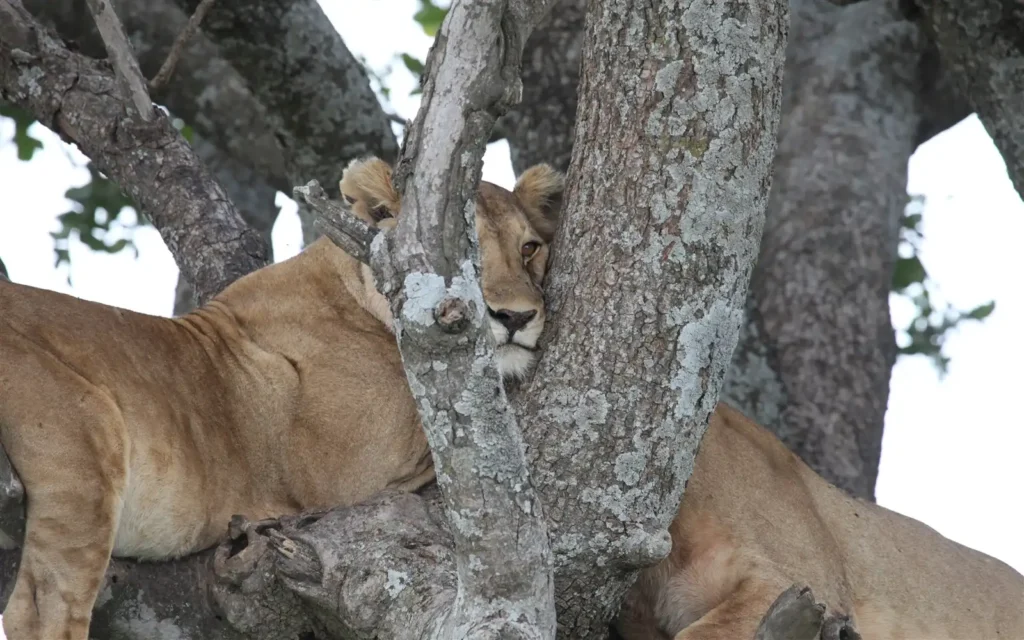
Wildlife Spectacles: Beyond the Tree-Climbing Lions
While Manyara’s lions lounging in acacia trees dominate Instagram feeds, the park shelters deeper mysteries. The lions’ arboreal siestas – unique in Africa – likely evolved to escape biting tsetse flies at ground level. Researchers have documented individual big cats spending up to 16 hours daily in the canopy, often using the same “favorite branches” year after year. Prime viewing occurs in the acacia woodlands near Maji Moto springs, where prides rest after nocturnal hunts.
The groundwater forest hosts one of Tanzania’s densest elephant populations. Unlike their savanna relatives, these pachyderms have developed specialized behaviors like bark-stripping yellow fever trees with surgical precision. Dry season concentrates herds of 50+ individuals around the Msasa and Maji Moto springs, where their deep rumbles echo through the mist at dawn.
Birders consider Manyara hallowed ground. The lake’s shallows attract 50,000+ flamingos during peak season (December-March), their pink masses visible from space. Raptors thrive along the escarpment – look for Verreaux’s eagles snatching hyraxes from cliff faces and palm-nut vultures cracking open oil palm fruits with specialized beaks. The forest interior shelters rare species like the silvery-cheeked hornbill, whose whooshing wingbeats sound like passing steam trains.
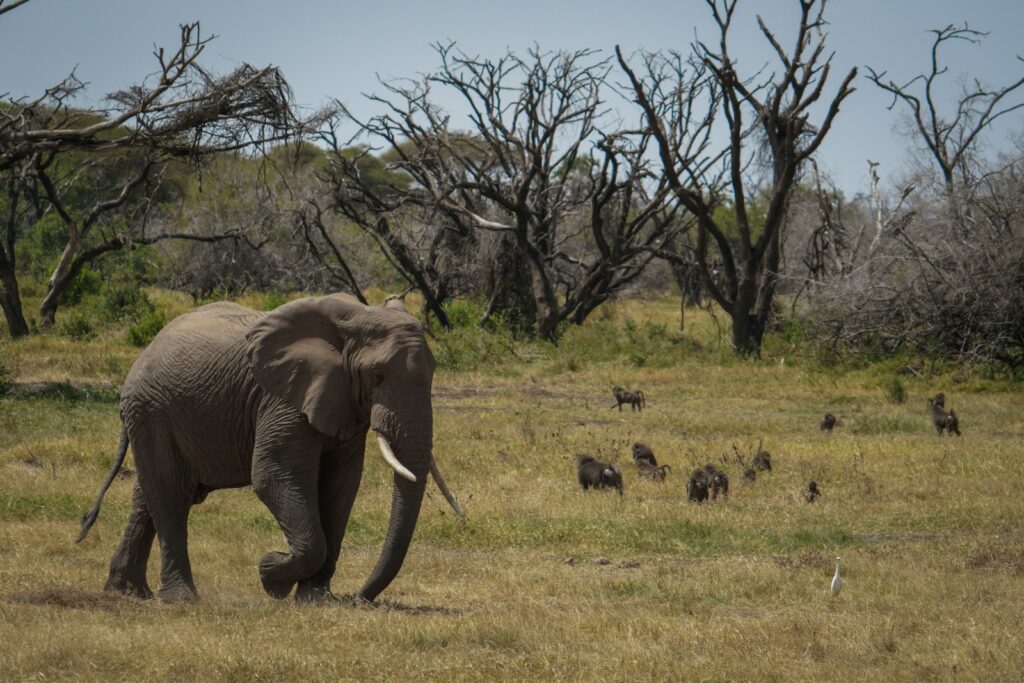
The Hidden Manyara: Beyond Game Drives
Most visitors rush through Manyara in half-day game drives, missing its subtler wonders. The park’s southern wilderness zone – accessible only on foot – reveals landscapes untouched by vehicles. Guided walking safaris here encounter buffalo tracks wider than dinner plates and ancient baobabs scarred by elephant tusks.
From November to March (when water levels permit), canoe safaris glide past hippo pods and malachite kingfishers diving for tilapia. The new treetop walkway – Tanzania’s longest canopy bridge – offers aerial views of blue monkeys racing through epiphyte-laden branches 18 meters above the forest floor.
Cultural encounters with the Iraqw people add depth. These skilled farmers, who adapted their lives to the Rift Valley’s contours, demonstrate traditional beekeeping in baobab hollows and share folklore about the escarpment’s sacred caves.
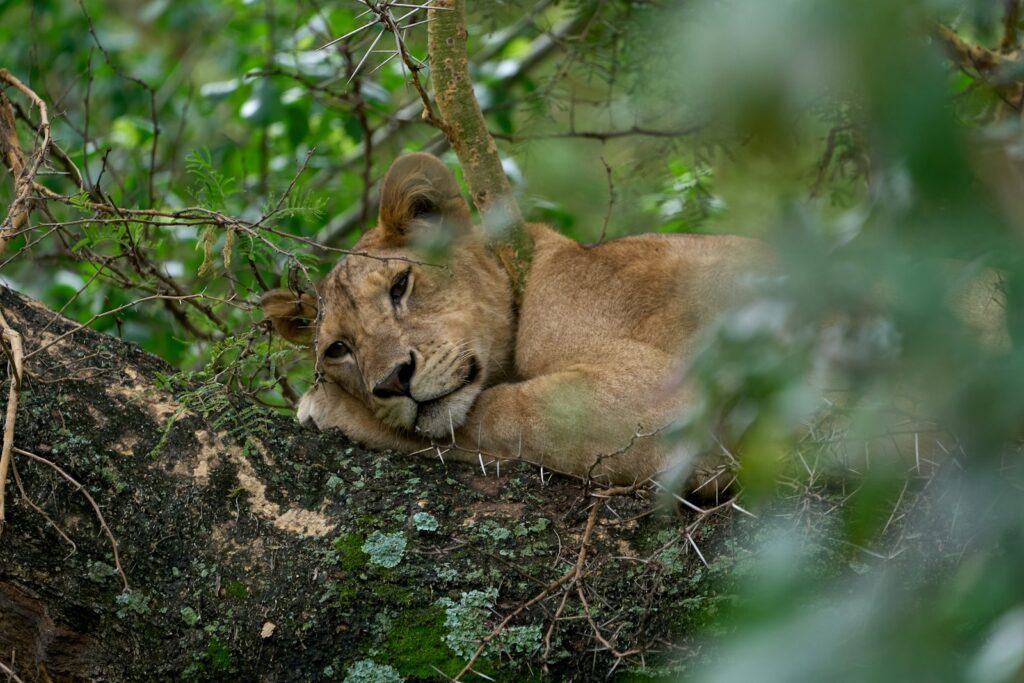
Conservation Triumphs: Protecting a Microcosm
Manyara serves as a vital corridor between the Serengeti ecosystem and the Eastern Arc Mountains. Anti-poaching patrols have made it one of Tanzania’s safest havens for elephants, with populations recovering to 500+ individuals. The park’s innovative “Manyara Ranch” program creates buffer zones where wildlife coexists with controlled Maasai cattle grazing.
Researchers recently discovered that Manyara’s groundwater forest acts as a critical “carbon sink” – its 350 plant species sequestering 40% more CO2 than adjacent savannas. This finding has spurred new reforestation initiatives using indigenous seedlings nurtured in community nurseries.

Planning Your Safari: Seasons & Strategies
Manyara rewards visitors year-round, but each season offers unique advantages:
The November-May green season transforms the park into an emerald paradise. While afternoon showers occur, mornings shine with crisp air perfect for photography. This period offers prime flamingo viewing and lush backdrops for elephant encounters.
June-October’s dry season concentrates wildlife around remaining water sources. Dusty conditions enhance visibility for spotting tree lions and leopards. Night drives (conducted just outside park boundaries) reveal aardvarks and bushbabies rarely seen by day visitors.
Two days proves ideal for experiencing Manyara’s full spectrum. Combine morning game drives with afternoon canoe safaris or forest walks, staying at one of the cliff-top lodges where sundowners overlook the Rift Valley.
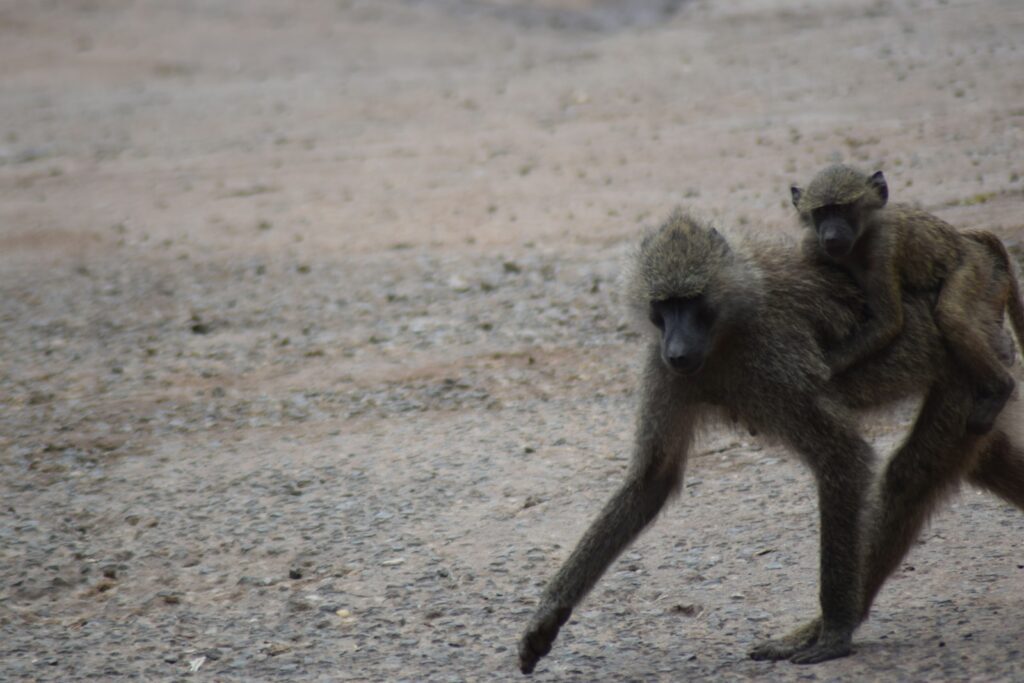
The Magic of Small Wonders
In an era of checklist tourism, Lake Manyara reminds us that wilderness isn’t measured in square miles but in moments of connection. It’s the gleam of a leopard’s eyes reflected in your flashlight beam during a night drive. The thunder of flamingos taking flight as your canoe drifts silently through morning mist. The shared laughter with Maasai guides when elephants mock-charge your vehicle, stopping just meters away with ears flapping.
This compact park contains multitudes – proof that Tanzania’s greatest safari experiences often come in small, perfectly formed packages. Those who linger discover its secret: that Africa’s soul resides not just in vast horizons, but in the intricate details of ecosystems where every creature plays its part in an ancient, ongoing story.
Recent Posts



